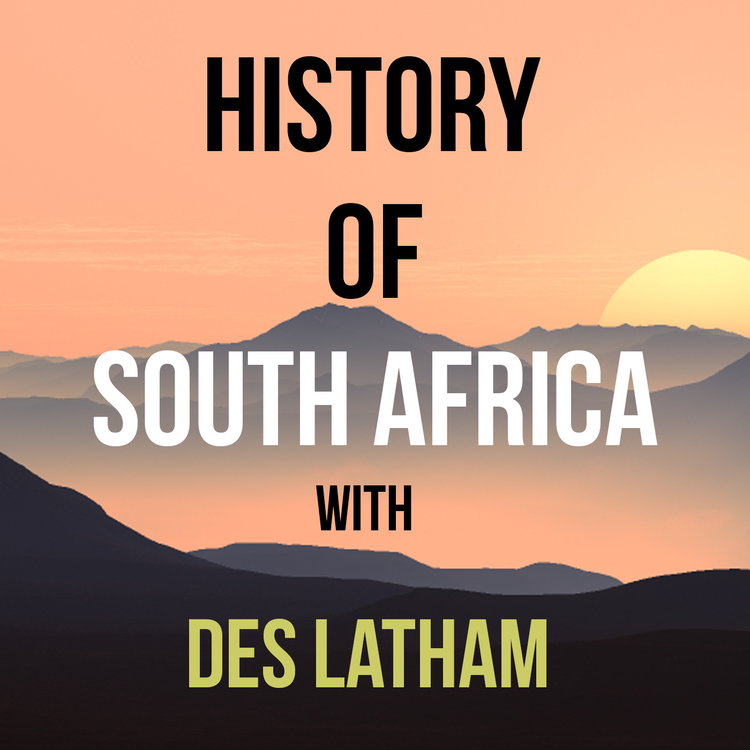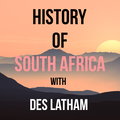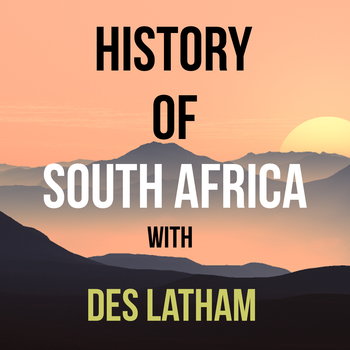
Episode 142 - Moshoeshoe the beard-shearer and the complex theological soup of the BaSotho
Loading player...
This is episode 142. It would be remiss of me not to say Congratulations Bokke on a gritty win over the All Blacks to become world champions for a record fourth time.
With that said, picture the scene. We are standing on the western slopes of the Drakensberg, looking out across the Caledon Valley. The rivers we see here flow westward, into the Atlantic Ocean. Far to the south east lie the villages of the amaThembu on the slopes of the mountains that are now part of the Transkei. This is a follow up episode of a sort from episode 141, because last week we spoke about the Orange River, and the Caledon River is a tributary of the Orange.
It rises in the Drakensberg, on the Lesotho–South Africa border, and flows generally southwest, forming most of the boundary between Lesotho and Free State province. The Caledon flows through southeastern Free State to join the Orange River near Bethulie after a course of 480 km. Its valley has one of the greatest temperature ranges in South Africa and is an excellent place to grow maize or other grains.
But in April 1835 Moshoeshoe was eyeing the equally verdant land to his south, amaThembu land and led a powerful and large expedition of more than 700 men along with a hundred pack-oxen loaded with food south easterly over the Maloti mountains towards these people.
At first his raid went according to plan, he seized a rich booty of cattle. The amaThembu were also facing raids from the other direction, the British who were conducting their Sixth Frontier War so they were in a rather invidious position.
Moshoeshoe was blooding his sons Letsie and Molapo in battle. They had become restless back at his Morija headquarters and their frustration grew when Moshoeshoe denied them permission to attack the Kora who’d setup camp nearby.
As the Basotho withdrew after the raid, they were ambushed by the amaThembu and lost most of their livestock. Worse, Moshoeshoe’s brother Makhabane was killed and he suffered heavy casualties. Moshoeshoe would never again send another full-scale expedition into amaXhosa or amaThembu territory.
This change of strategy was fully supported by the missionaries who had begun living with Moshoeshoe’s people. What followed would be a remarkable partnership which is still hotly debated today and the interests of the missionaries would be further expanded or extended by the interests of the Basotho leader.
Another interesting change was taking place for the people of this mountain territory, driven by missionaries both the French and the English. This is because the religion of the 19th-century Sotho speakers was defined chiefly by its outward manifestation, the signs on the land, the animals, things going on that you can hear, smell, touch, see.
Religion, as the Sotho term ‘borapeli’ illustrates, was what people did and not what they
believed. This is a fundamental foundational difference that stymied the first missionaries at first.
The translation of molimo as God inaugurated a new era where there was a fixation on linear progression in an age of evolutionary thinking, where Protestantism was the theology. How did Molimo interlink with Tlatla-Mochilo? For the missionaries, this was an immense philosophical wrestling match.
This is where Tsapi, a man described as Moshoeshoe’s advisor and diviner re-enters our story for a moment.
Thanks to one of my listeners who is a descendent of Tsapi by the name of Seanaphoka for providing some more background.
Tsapi was actually the first son of the Bafokeng Tribal Chief Seephephe. Tsapi had a sister called Mabela, who was Moshoeshoe’s first wife and as Queen Consort she took the name MmaMohato.
Tsapi became Advisor and Senior Council member of Moshoeshoe.
With that said, picture the scene. We are standing on the western slopes of the Drakensberg, looking out across the Caledon Valley. The rivers we see here flow westward, into the Atlantic Ocean. Far to the south east lie the villages of the amaThembu on the slopes of the mountains that are now part of the Transkei. This is a follow up episode of a sort from episode 141, because last week we spoke about the Orange River, and the Caledon River is a tributary of the Orange.
It rises in the Drakensberg, on the Lesotho–South Africa border, and flows generally southwest, forming most of the boundary between Lesotho and Free State province. The Caledon flows through southeastern Free State to join the Orange River near Bethulie after a course of 480 km. Its valley has one of the greatest temperature ranges in South Africa and is an excellent place to grow maize or other grains.
But in April 1835 Moshoeshoe was eyeing the equally verdant land to his south, amaThembu land and led a powerful and large expedition of more than 700 men along with a hundred pack-oxen loaded with food south easterly over the Maloti mountains towards these people.
At first his raid went according to plan, he seized a rich booty of cattle. The amaThembu were also facing raids from the other direction, the British who were conducting their Sixth Frontier War so they were in a rather invidious position.
Moshoeshoe was blooding his sons Letsie and Molapo in battle. They had become restless back at his Morija headquarters and their frustration grew when Moshoeshoe denied them permission to attack the Kora who’d setup camp nearby.
As the Basotho withdrew after the raid, they were ambushed by the amaThembu and lost most of their livestock. Worse, Moshoeshoe’s brother Makhabane was killed and he suffered heavy casualties. Moshoeshoe would never again send another full-scale expedition into amaXhosa or amaThembu territory.
This change of strategy was fully supported by the missionaries who had begun living with Moshoeshoe’s people. What followed would be a remarkable partnership which is still hotly debated today and the interests of the missionaries would be further expanded or extended by the interests of the Basotho leader.
Another interesting change was taking place for the people of this mountain territory, driven by missionaries both the French and the English. This is because the religion of the 19th-century Sotho speakers was defined chiefly by its outward manifestation, the signs on the land, the animals, things going on that you can hear, smell, touch, see.
Religion, as the Sotho term ‘borapeli’ illustrates, was what people did and not what they
believed. This is a fundamental foundational difference that stymied the first missionaries at first.
The translation of molimo as God inaugurated a new era where there was a fixation on linear progression in an age of evolutionary thinking, where Protestantism was the theology. How did Molimo interlink with Tlatla-Mochilo? For the missionaries, this was an immense philosophical wrestling match.
This is where Tsapi, a man described as Moshoeshoe’s advisor and diviner re-enters our story for a moment.
Thanks to one of my listeners who is a descendent of Tsapi by the name of Seanaphoka for providing some more background.
Tsapi was actually the first son of the Bafokeng Tribal Chief Seephephe. Tsapi had a sister called Mabela, who was Moshoeshoe’s first wife and as Queen Consort she took the name MmaMohato.
Tsapi became Advisor and Senior Council member of Moshoeshoe.

